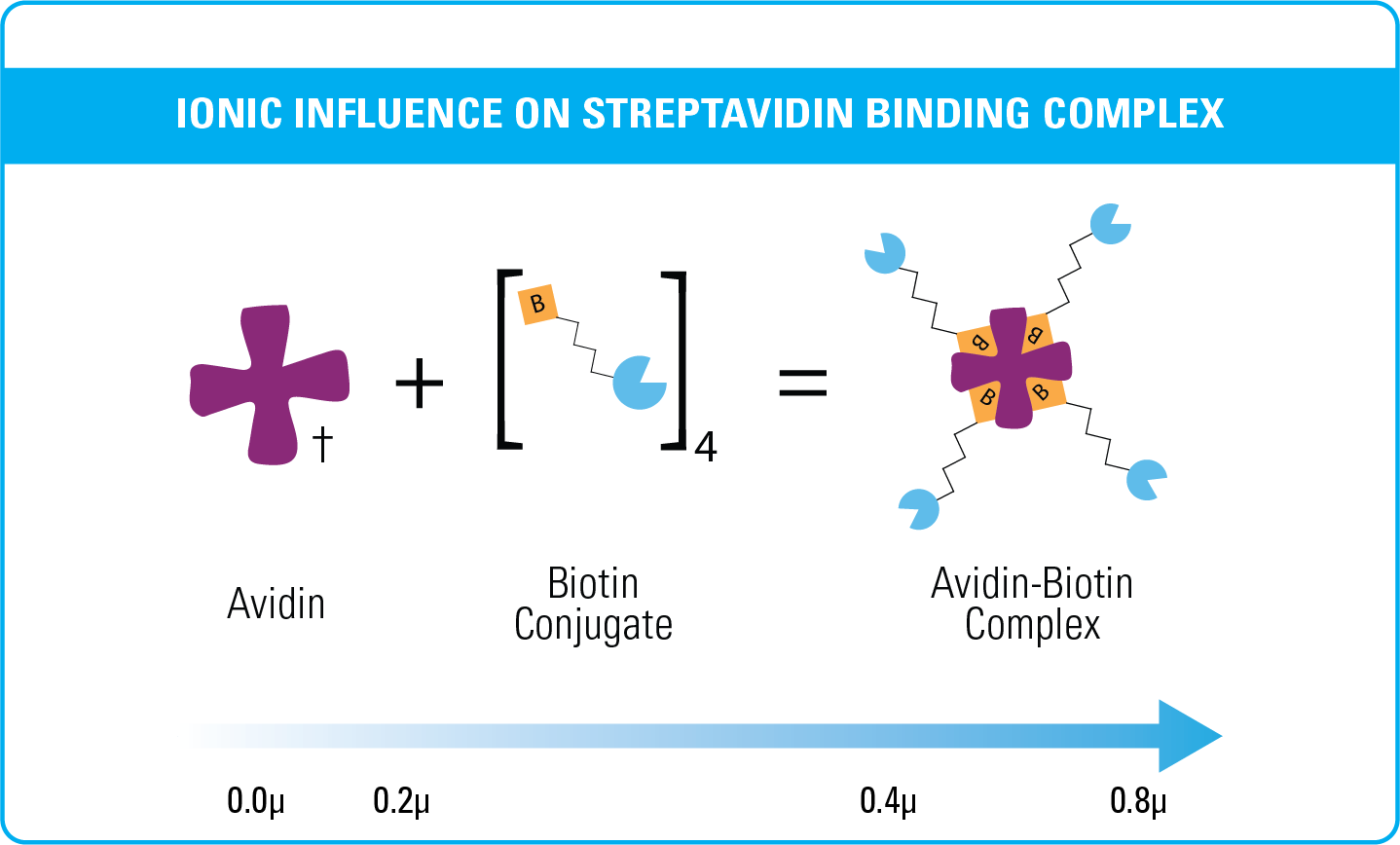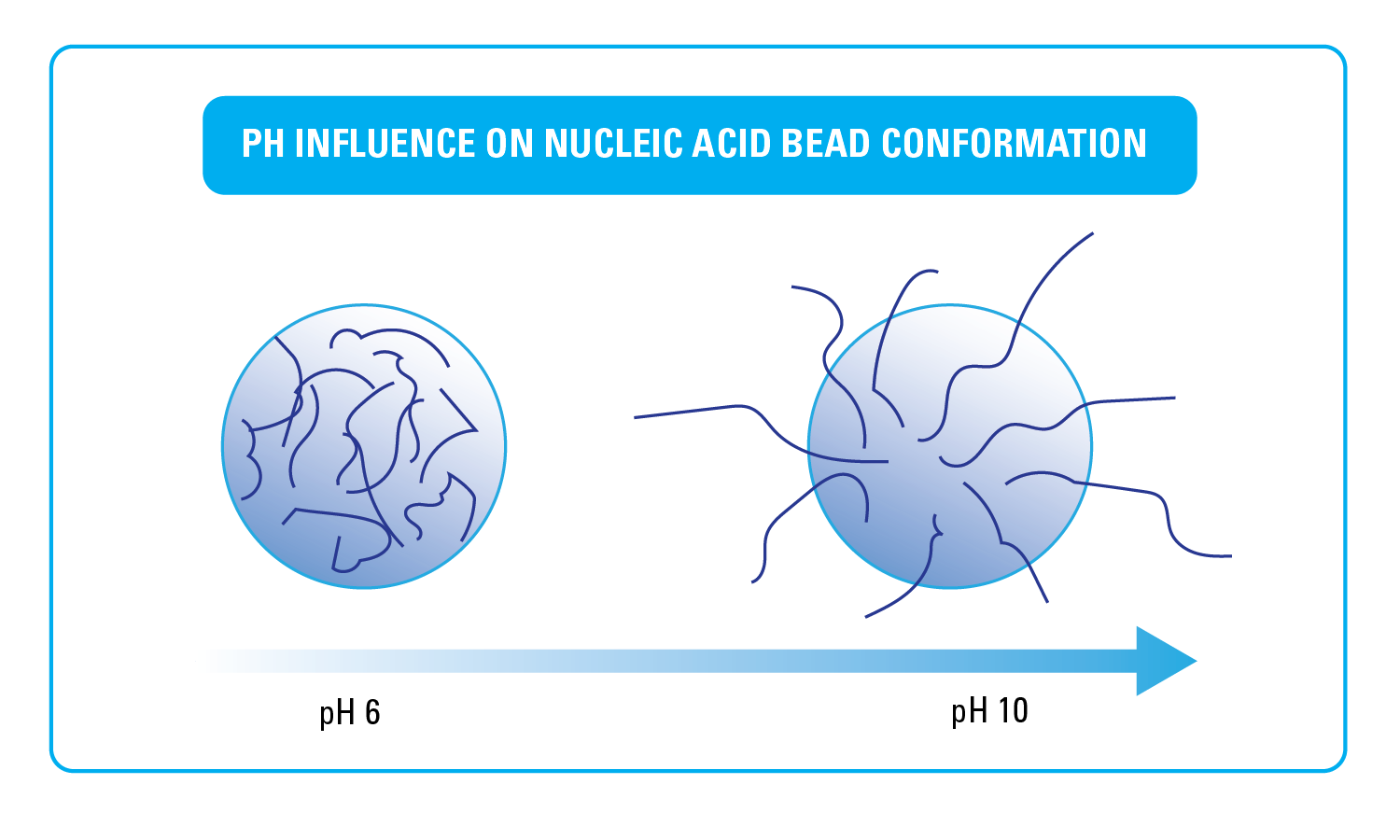Employing Nucleic Acid Conjugated Microspheres in the Field of Flow Cytometry: Part III
Posted: September 16, 2019
In part 1 of our series we discussed the significance of employing nucleic acid conjugated beads in the field of Flow Cytometry. In section II we discussed the optimal concentration of nucleic acid to generate a conjugate suitable for flow cytometry analysis. In this final discussion on creating nucleic acid conjugated beads for analysis, we want to discuss chemical effects that can influence the nucleic acid configuration on the bead.

Important aspects to nucleic acid bead protocols that will impact your results include both pH and salt concentrations. This is an important consideration during both conjugation and downstream analysis. If the nucleic acids are adhered to the bead surface, then the corresponding interaction of the particle with the surrounding sample is diminished. Maintaining appropriate pH and salt levels ensure a nucleic acid configuration that extends the molecule into the surrounding matrix. Charreyre et al. explored this phenomenon and discovered that by optimizing the pH and salt concentrations in the reaction, they were able to improve the nucleic acid-microsphere configuration by adjusting pH and salt concentrations thereby encouraging nucleic acids to extend away from the bead surface into the surrounding matrix in a brush-like fashion. If this step is not performed, then the nucleic acids will likely adhere to the surface and diminish subsequent flow results.
Results from procedures that rely on the flow cytometric analysis of nucleic acid microspheres could be improved by incorporating these optimization steps into a protocol. For example, Horejsh et al. developed a fluid array system using microsphere-conjugated molecular beacons and flow cytometry for the specific, multiplexed detection of unlabeled nucleic acids in solution. Incorporating the information gleaned from past work such as that presented by Charreyre et al. could improve downstream flow cytometry results in diagnostic procedures such as pathogen detection as explored by Horejsh.

Latex Particles. Langmuir, 13(12), 3103–3110. doi: 10.1021/la961034g
